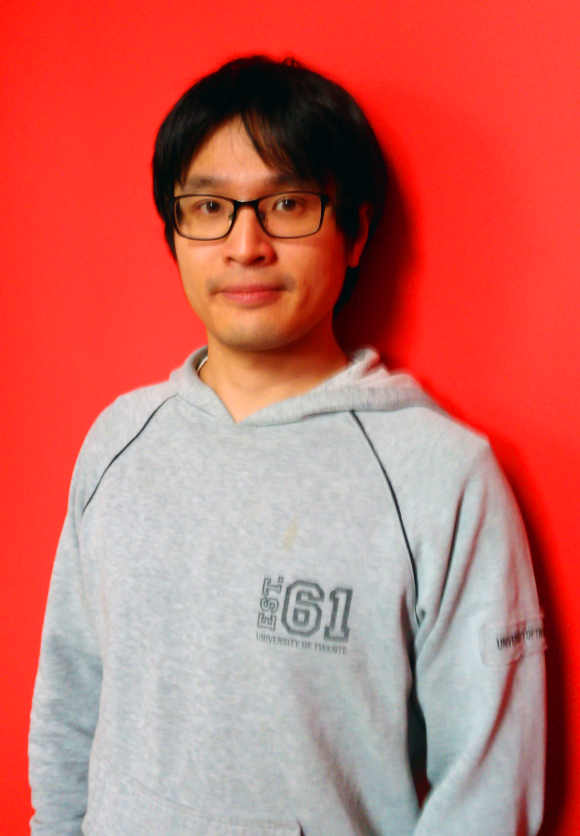Cluster jets for quasi-phase matching in high-order harmonic generation
Yin Tao is PhD Student in the MESA+ research group Laser Physics and Nonlinear Optics. His promoter is Klaus Boller.
High-order harmonic generation (HHG) is an extremely nonlinear optical process that generates extreme ultraviolet (XUV) radiation or even soft X-rays, with a high, unprecedented spatial and temporal coherence. However, HHG is intrinsically inefficient. The highest harmonic order (shortest wavelength) that can be efficiently generated is limited through the loss of the phase-matching condition due to a large ionization fraction induced by the required high drive laser intensities. A potential solution to efficiently generate shorter-wavelength radiation is using quasi-phase matching (QPM). We propose and investigate, in this thesis, a novel scheme for achieving QPM in HHG via a density modulated cluster jet, as opposed to a modulated gas jet. Such a cluster jet can be provided from a supersonic expansion of a noble gas through a slit nozzle, where clusters are aggregated via van-der-Waals forces. Compared to a gas jet, a density modulation is expected to be more easily achieved by placing an array of wires (grid) on the top of the nozzle. However, in our initial experiments, we did not observe any enhanced HH output using previously fabricated grids with various different modulation periods. These experiments suggest that, even if using a density modulated cluster jet remains promising for achieving QPM in HHG, an according demonstration first requires a thorough investigation of several basic and essential aspects.
In this thesis, we investigated three essential aspects. First, we presented a comprehensive modelling of cluster formation and systematically investigated all influences of various critical physical assumptions for the gas condensation in a supersonic nozzle using argon as an example. Using the proposed baseline model, we showed that the liquid mass fraction, g, is very insensitive with regards to the named variations in this model. The average cluster size, <N>, was retrieved from interferometric and Rayleigh scattering measurements by using the calculated g from the baseline model. We determined that <N> follows a modified power law for higher values of the Hagena parameter (1.8x104 to 2.5x105). Our power law complements the previously found scaling law for the Hagena parameter, extending the total range of predictable average cluster sizes from a thousand to almost ten million atoms per cluster.

Secondly, we performed a detailed experimental study on HHG in a supersonic argon jet. In order to identify and separate the contributions from clusters versus that of gas monomers in the jet to the generation of high-order harmonics, we characterized the harmonic spectra over a broad range of stagnation pressures at two different reservoir temperatures. We proposed a simple model with the calculated value of g to interpret the dependence of the HH yield on the total atomic number density in the jet. We observed that, below an average cluster size, <N>, of about 1000 atoms, HHG in clusters shows the same efficiency as in gas monomers. Only with larger clusters, HHG becomes less efficient.
Lastly, we investigated quasi-phase matching for HHG, specifically aiming at determining a proper quasi-phase matching modulation period for achieving the optimum HH output pulse energy. We developed a one-dimensional, dynamic QPM model for HHG in a gaseous medium (argon) with a spatially periodic density modulation. From the model, we showed that simply choosing the modulation period according to the coherence length calculated at the peak intensity of the laser pulse, is not the optimum choice for achieving the highest HH output pulse energy. According to our model, the optimum HH output pulse energy is obtained when transient QPM is provided in the leading edge of the drive laser pulse.
The basic understanding of the cluster formation, the nonlinear HH response of clusters and the temporal dependence of the phase mismatch in the generating media is essential, and the progress achieved in our work on these aspects forms a solid and important foundation towards exploitation of QPM in HHG.
Starting-time 14.30h Building Waaier - Prof.dr. G. Berkhoff-zaal





